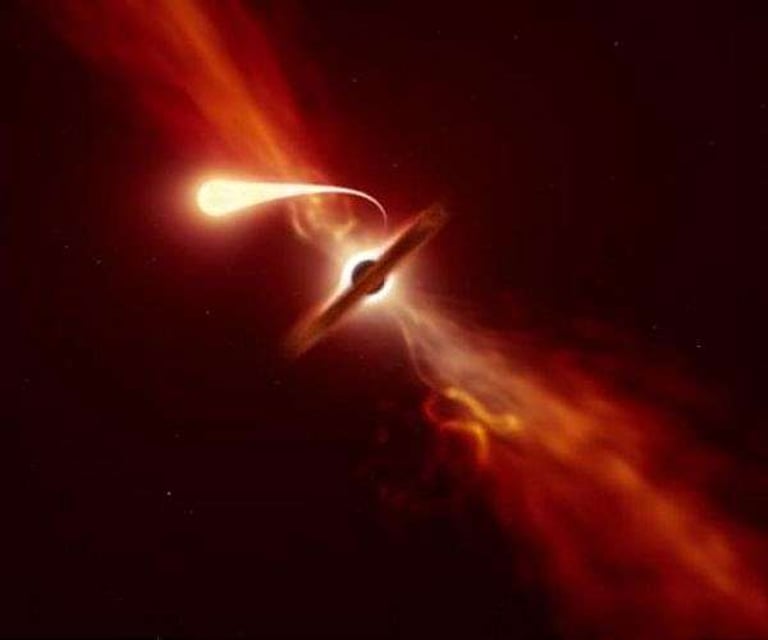New Technique Unveils Hidden Supermassive Black Hole Pairs Using Small Black Hole Signals
August 11, 2024
A research team has proposed a novel method for detecting undetectable supermassive black hole pairs by analyzing high-frequency signals from small black hole binaries.
Lead author Jakob Stegmann likens this detection approach to tuning into radio channels, where the signals from small black holes provide insights into the presence of larger black holes.
The technique focuses on analyzing gravitational waves emitted by nearby small stellar black hole binaries to infer the existence of larger black hole pairs.
Published in the journal Nature Astronomy, the study addresses the ongoing mystery surrounding the origins of supermassive black holes in the universe.
Detecting gravitational waves from supermassive black holes is particularly challenging due to their low frequency, which current detectors are not sensitive enough to capture.
Current detection methods have primarily identified gravitational waves from small black holes, leaving supermassive black hole mergers largely undetected.
Future detectors, such as the ESA-led LISA mission, are expected to enhance sensitivity but may still face difficulties in detecting the most massive black hole pairs.
Co-author Lucio Mayer emphasized the necessity for the gravitational wave community to prioritize the design of deci-Hz detectors to advance research in this field.
The origins of supermassive black holes remain unclear; they may have formed early in the universe or grown over time by consuming matter and merging with smaller black holes.
Recent findings from pulsar timing arrays provide indirect evidence of merging supermassive black hole binaries, suggesting their existence despite the challenges in direct detection.
This innovative method could help uncover supermassive black hole mergers that currently manifest as a background hum in the gravitational wave spectrum.
Summary based on 3 sources


